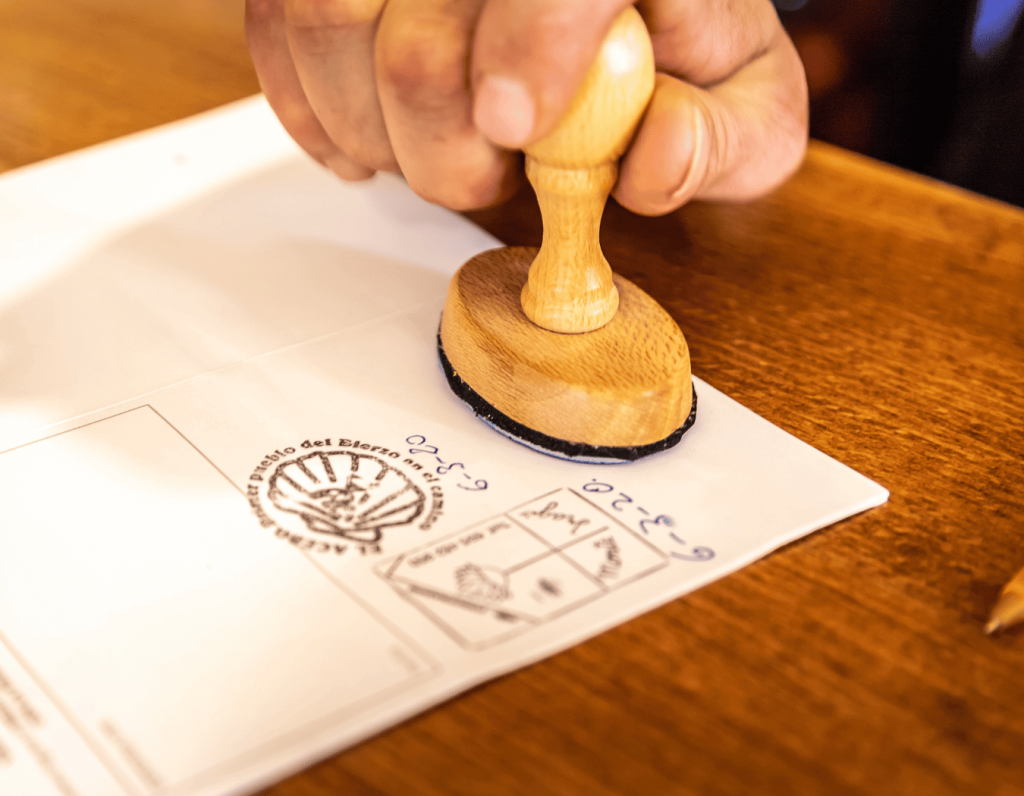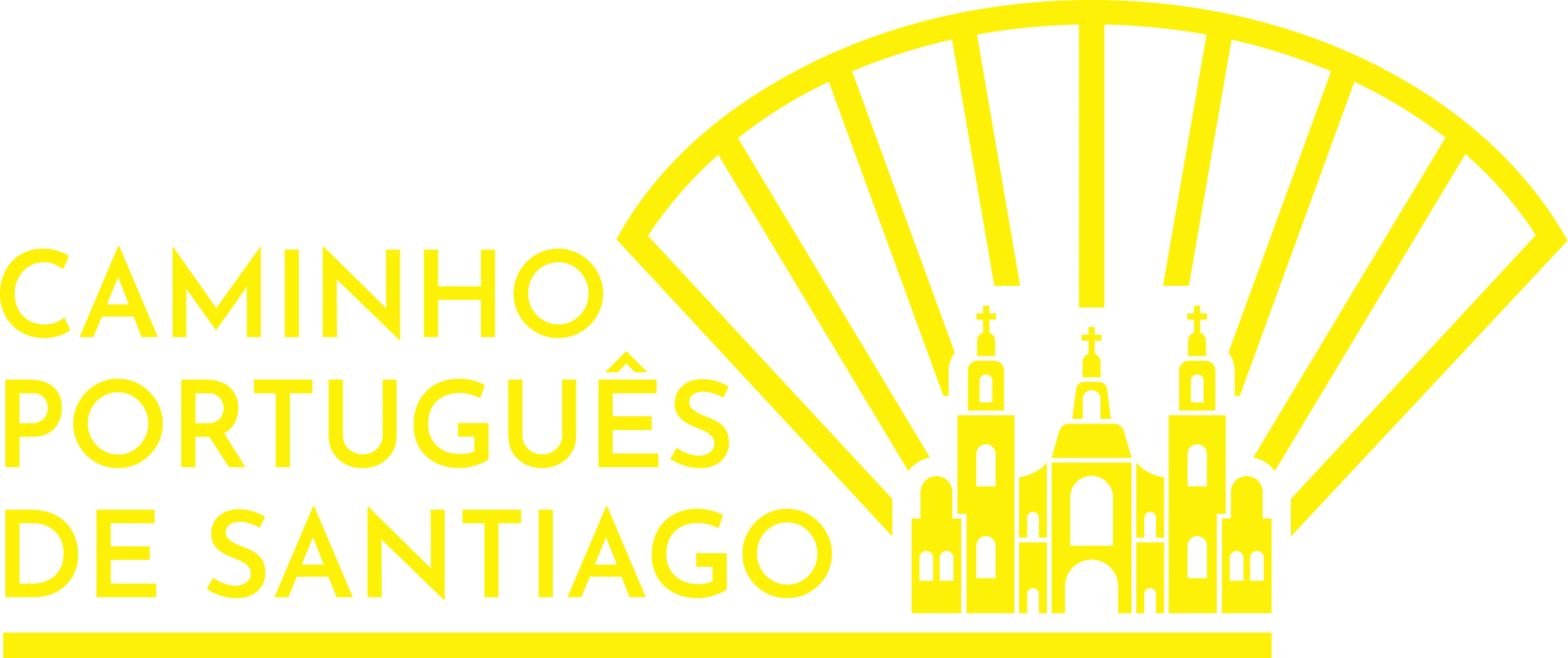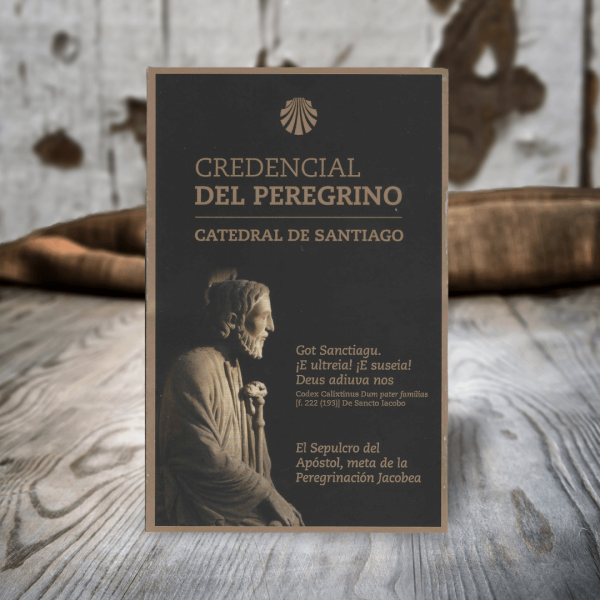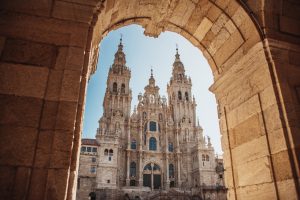The Pilgrim's Credential is an essential element for anyone who decides to walk the Camino de Santiago, whichever route they choose. For those who choose the Portuguese Way, this document serves as an official record of the journey and is indispensable for obtaining the "Compostela" on arrival in Santiago de Compostela. In this article, we'll explore everything you need to know about the credencial, its history, where you can buy it and the most iconic stamps you won't want to miss along the way.
The History of the Pilgrim Credential
The tradition of the Pilgrim's Credential has deep roots dating back to the Middle Ages. For centuries, pilgrims used letters of recommendation issued by churches and religious orders attesting to their status as pilgrims. These documents allowed travelers to be welcomed in shelters and hostels along the way, guaranteeing them safety and hospitality.
In the Middle Ages, the pilgrimage to Santiago de Compostela was one of the greatest acts of Christian faith, along with journeys to Rome and Jerusalem. The credential, or similar document, has evolved over the centuries, adapting to the needs and customs of each era. During the 20th century, with the revival of the Camino de Santiago, the credencial took the form of a "passport", in which pilgrims recorded their journey with stamps at each place they passed through.
Today, the credential is a symbol of belonging to this ancient tradition, allowing pilgrims to obtain the "Compostela" - the certificate that proves they have completed at least 100 kilometers on foot (or 200 km by bike) to Santiago de Compostela.

Where to buy the Pilgrim Credential
If you're going to start your pilgrimage on the Portuguese Camino de Santiago, it's essential to acquire the Pilgrim's Credential before you begin your journey. Here are some options where you can get one:
1. Pilgrim associations
Many associations of friends of the Camino de Santiago in Portugal and around the world offer credentials. These associations have offices in strategic cities along the way and often send the credential by post on request.
2. Hostels and Churches along the Way
Several hostels and churches along the Portuguese Way offer the credential. If you forget to buy it before you set off, you can find this document in places like the Cathedral of Lisbon, the Cathedral of Porto, or in hostels in the main towns along the route, such as Ponte de Lima or Valença.
3. Tourist offices
In some places, tourist offices also have credentials available for sale, especially in big cities like Lisbon, Porto or Valença.
4. Online shopping
Now you can also buy the Pilgrim's Credential easily and conveniently through our official website. Just go to https://caminhoportuguesdesantiago.eu/product/credencial-do-peregrino/ and order your credential, which will be sent to your address. That way, you can start your pilgrimage with everything prepared.
How to Use the Pilgrim Credential
The credential must be stamped along the route, recording each stage of your walk to Santiago de Compostela. Here are some simple steps to ensure you are using the credential correctly:
- Obtaining Stamps Along the Way: Each day you walk, you should look for at least one stamp (or two, for the last 100 km). These stamps can be obtained from hostels, churches, restaurants and other places along the way.
- Presentation at Santiago Cathedral: When you arrive in Santiago de Compostela, you must present your credential at the Pilgrims' Center for validation. If you have completed the minimum distance and collected the necessary stamps, you will be given the "Compostela", the official certificate of the pilgrimage.
Iconic stamps along the Portuguese Way
Obtaining stamps is not just a formality - many stamps along the way are considered true symbols and souvenirs of your pilgrimage. Here are some of the most iconic stamps that pilgrims won't want to miss:
1. Lisbon Cathedral
- Location: Lisbon, Portugal
- Description: This is one of the first stamps for those starting their journey in the Portuguese capital. Lisbon Cathedral, one of the city's oldest monuments, offers a beautiful stamp that represents the official start of the Portuguese Way.
2. Monastery of Santa Clara-a-Velha, Coimbra
- Location: Coimbra, Portugal
- Description: The Santa Clara-a-Velha Monastery stamp is highly sought after. Representing Coimbra's rich religious and cultural history, this stamp is a beautiful testimony to the passage through the city.
3. Porto Cathedral
- Location: Porto, Portugal
- Description: The Porto Cathedral stamp is one of the most iconic on the Portuguese Way. The cathedral is an important starting point for many pilgrims, and the stamp reflects the city's importance on the route.
4. Vairão Monastery, Vila do Conde
- Location: Vila do Conde, Portugal
- Description: The Monastery of Vairão, a place of spiritual welcome, offers one of the most beautiful stamps on the Portuguese Way, often depicting the architecture of the monastery itself.
5. Ponte de Lima Pilgrims' Hostel
- Location: Ponte de Lima, Portugal
- Description: One of the most sought-after stamps for pilgrims walking the Central Way. Ponte de Lima is a historic town and the stamp, depicting the famous medieval bridge, is a unique souvenir.
6. Valença Fortress
- Location: Valença, Portugal
- Description: The Valença Fortress stamp marks the transition between Portugal and Spain. The fortress is a symbol of the region's historical defense and the stamp is one of the last obtained on Portuguese soil.
7. Tui Cathedral
- Location: Tui, Spain
- Description: After crossing the border, many pilgrims make a point of getting a stamp from Tui Cathedral. This stamp represents the start of the Portuguese Way in Spanish territory.
8. Shrine of the Pilgrim Virgin, Pontevedra
- Location: Pontevedra, Spain
- Description: This is one of the most revered stamps on the Portuguese Way, depicting the Pilgrim Virgin, protector of pilgrims.
9. Padrón Pilgrims' Hostel
- Location: Padrón, Spain
- Description: The Padrón stamp is one of the most special, representing the rock where, according to legend, the boat with the body of St. James was moored.
10. Santiago de Compostela Cathedral
- Location: Santiago de Compostela, Spain
- Description: The final stamp of Santiago Cathedral is the most desired and marks the end of the pilgrimage. This stamp is often considered a trophy by pilgrims.
Tips for Using and Protecting Credentials
- Protect the Credential: The credential can easily be damaged by rain or sweat during the hike. Use a waterproof bag to protect it.
- Stamp Regularly: Don't forget to get stamps along the way, especially in the last 100 km, where two stamps a day are required.
- Value Iconic Stamps: In addition to hostels, try to get your credential stamped at places of historical and spiritual importance, making your credential an even richer memento of your journey.
Conclusion
The Pilgrim's Credential is an essential item for everyone who walks the Portuguese Camino de Santiago. Not only does it allow you to record each stage of the journey, but it also becomes a precious souvenir of the pilgrimage. Along the way, the iconic stamps not only represent important milestones, but also enrich the pilgrim's spiritual and cultural experience. Don't forget to buy your credential before you set off, whether at a pilgrims' association, a hostel or on our website, https://caminhoportuguesdesantiago.eu/product/credencial-do-peregrino/, and set off on your journey with everything prepared!











